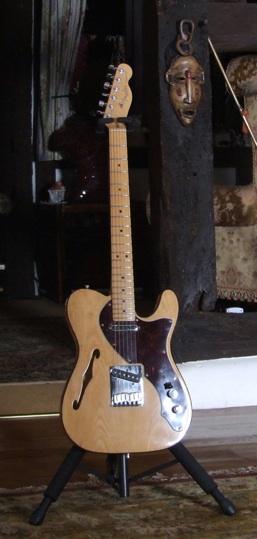Fender Telecaster


The Fender Telecaster represents an important milestone in the history of electric guitars. As early as 1950, Fender began making a simple, single pickup solid called an Esquire. This progressed to the twin pickup Broadcaster and then the Telecaster (the Broadcaster name was disputed by Gretsch). Up until then, guitar making had been done on the basis of instruments produced individually at a bench. The Tele was the first guitar to use mass production techniques. Bodies, necks and fittings were made in batches and then bolted together. The design is very basic with a single cutaway, two pickups and simple controls with no frills or fancies. The standard Telecaster does not have a traditional rosewood fretboard, the frets being inserted directly into the maple neck. Stratocasters are mostly the same although some do have rosewood fretboards.
Today, many musicians favour the Telecaster and, if not their main guitar, then one they keep in the set they play regularly. As a boy, I remember Bruce Welsh of the Shadows playing a Tele.
If I had to choose a few guitars, the Telecaster, would be my second or third choice partly because of its light weight and no nonsense simplicity. My version is known as a ‘thin line’, which is a semi solid design with a central block and hollow sections each side. There is a single, large ‘f’ hole. This model is considerably lighter than the standard solid bodied variant and I like it a lot. Unlike the Stratocaster with its aesthetic design qualities, the Telecaster is very basic and certainly lacks eye appeal. It is one of the quirks of design that something mass produced so long ago had the hallmarks of greatness.

